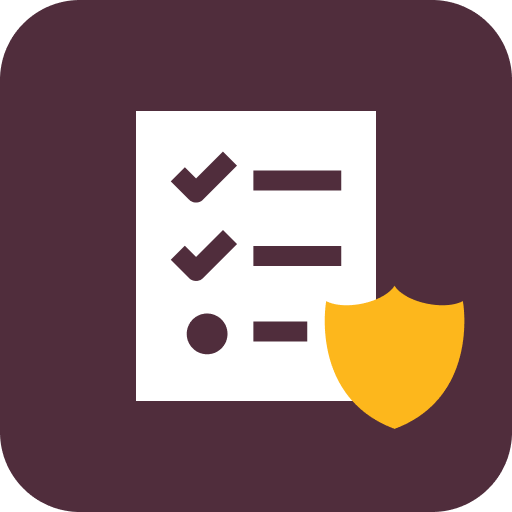Asynchronous communication is the practice of exchanging information without requiring participants to be present at the same time. Asynchronous communication occurs when information is sent and received at different times, with a delay between the transmission and response. Unlike real-time conversations, asynchronous exchanges don't require immediate attention or responses from participants. This time-shifted approach gives recipients the freedom to process information and respond when it best suits their schedule and workflow.
Asynchronous communication examples
In today's increasingly digital and remote work environment, asynchronous communication has become essential for organizations seeking flexibility, productivity, and global teamwork.
Examples of asynchronous communication tools in the workplace include:
- Email, which allows detailed message exchanges without requiring immediate responses
- Project management tools like Asana or Trello where tasks and updates can be posted for team review
- Recorded videos from platforms like Loom that team members can watch at their convenience
- Collaborative documents like Google Docs with comments and suggestions that can be addressed over time
- Messaging platforms like Slack or Microsoft Teams when used for non-urgent communication
Synchronous vs. asynchronous communication
While asynchronous communication is when people communicate at different times, synchronous communication is real-time communication, with participants exchanging information simultaneously. This form of communication includes face-to-face meetings, video conferences, phone calls, and instant messaging when immediate responses are expected. The key characteristic of synchronous communication is that all parties must be present and engaged at the same moment, while asynchronous communication does not require them to be.
The fundamental differences between these communication styles include:
Asynchronous communication
Synchronous communication
Timing
Delayed responses at different times
Real-time, simultaneous participation
Urgency
Space for consideration and response
Immediate reactions and pressing issues
Format
Written or recorded
Verbal exchanges and body language
Documentation
Inherently creates a record
May require additional effort to document
When to use asynchronous communication vs. synchronous communication
Now that the differences between synchronous and asynchronous communication are clear, when should you use each style?
Use asynchronous communication for:
- Information sharing that doesn't require immediate response
- Detailed explanations or instructions that may need reference later
- Cross-time zone collaboration with globally distributed team
- Complex problems requiring thoughtful consideration
- Updates and status reports that don't warrant interrupting workflow
Synchronous communication works best for:
- Crisis management or urgent decisions requiring immediate input
- Complex discussions where nuance, emotion, or tone is crucial
- Brainstorming sessions that benefit from spontaneous idea exchange
- Team building and cultivating personal connections
- Addressing sensitive or emotional topics requiring empathy and immediate feedback
Benefits of asynchronous communication
Asynchronous communication can be a beneficial tool for information sharing, granting employee autonomy over work hours, and managing distributed teams.
Increased flexibility and autonomy
Asynchronous work liberates team members from the constraints of synchronized schedules. This flexibility allows people to work during their most productive hours and respond to messages on their own time and when they have the mental bandwidth to do so, rather than interrupting deep work for immediate responses.
For organizations with global teams spanning multiple time zones, async communication enables continuous progress without requiring team members to adjust their work hours or personal lives. This approach respects individuals' autonomy and supports a healthier work-life balance and can reduce burnout by lifting the pressure to be constantly available.
Improved productivity and efficiency
One of the most significant advantages of asynchronous communication is its ability to minimize interruptions that fragment focus time and diminish productivity. Research has shown that it can take up to 23 minutes to fully regain concentration after an interruption like an urgent notification, making constant synchronous communication extremely costly in terms of productive time.
By reducing the frequency of meetings and the expectation of immediate responses, asynchronous communication creates space for:
- Deep work requiring sustained concentration
- Thoughtful, comprehensive responses rather than reactive ones
- More efficient use of work hours without constant context-switching
- Reduced meeting fatigue and digital overwhelm
Enhanced inclusivity and collaboration
Asynchronous methods democratize participation by accommodating diverse needs and working styles. This approach benefits:
- Remote teams who may otherwise feel disconnected
- Working parents and caregivers juggling professional and personal responsibilities
- Neurodivergent individuals who may process information differently
- Team members with different communication preferences and strengths
- Remote workers in different time zones who might otherwise miss synchronous discussions
By allowing everyone to contribute at their own pace, asynchronous communication often results in more diverse perspectives and more thoughtful contributions than might emerge in a time-pressured meeting environment.
Better information sharing
Unlike verbal conversations that can be forgotten or misremembered, asynchronous communication naturally creates a documented trail of information, decisions, and context.
This gives team members written information to refer back to, whether that’s important details about a project or historical context for a newly onboarded member. Communicating asynchronously can also ensure transparency and alignment across departments as these conversations are recorded and available for other coworkers to read.
Challenges of asynchronous communication
While asynchronous communication can promote productivity, collaboration, and information sharing, there are some drawbacks:
Delayed response times
Perhaps the most obvious drawback of asynchronous communication is the inherent delay between messages. These gaps can slow down decision-making when multiple stakeholders are involved and create bottlenecks when quick approvals or action are needed.
Long-term, slower responses can also reduce momentum on projects that require frequent collaboration.
Potential for miscommunication
Without the context provided by tone of voice, facial expressions, and body language that you get with in-person communication or video conferencing, written asynchronous communication is more prone to misunderstanding. Messages can be interpreted differently than intended, leading to confusion about priorities, expectations or action items, misread emotions, or even cultural or linguistic misunderstandings in diverse teams.
Over-reliance on written communication
While writing is excellent for clarity and documentation, it has limitations when conveying:
- Complex ideas that might be easier to explain verbally
- Emotional nuance or sensitive feedback
- Creative concepts that benefit from visual demonstration
- Building rapport and trust between team members
Additionally, some team members may struggle with written expression or find it more time-consuming than verbal communication.
Best practices for implementing asynchronous communication methods
Thinking of implementing asynchronous communication at your company? Here’s how to start.
Set clear expectations
Establishing team norms around asynchronous communication can help employees work more efficiently and avoid bottlenecks, frustration, and other challenges.
- Define reasonable response times for different types of communications (e.g., 24 hours for emails, 4 hours for urgent Slack messages)
- Clarify which channels should be used for different types of communication
- Establish protocols for truly urgent matters that require real-time interactions
- undefined
- Create shared understanding about working hours and availability across time zones
Emphasize clarity and conciseness
Effective communication in asynchronous work environments requires intentional clarity. This might involve using descriptive subject lines, starting with the most important information, or breaking down complex information into digestible chunks.
Asynchronous communication may also require added description or context. Incorporate visuals, diagrams, or screenshots when they enhance understanding. You can even consider recording short videos for complex explanations that benefit from visual or verbal delivery.
Finally, always be sure to include specific deadlines, action items, or questions requiring response.
Choose the right asynchronous communication tools
The effectiveness of depends largely on using appropriate tools:
- Project management platforms for task tracking and project updates
- Document collaboration tools for shared information and feedback
- Video recording tools for visual explanations and presentations
- Knowledge management systems for documentation and reference materials
- Asynchronous messaging platforms with organized communication channels and threads
Select tools based on your team's specific needs, technical capabilities, and the types of work being performed.
Evolve with your team’s needs
Moving from predominantly synchronous to more asynchronous communication requires intentional change management, and you might not always get it right on the first try.
Start with low-stakes implementations, like converting some status update meetings to written formats. With every implementation, provide training on effective asynchronous communication techniques and tool usage. For example, if you’re reducing meeting frequency, provide guidelines on best practices for deciding when a meeting is necessary and how the team should communicate in lieu of a meeting.
As you continue to add more asynchronous communication to your ways of working, create spaces for feedback about what's working and what needs adjustment.
Future of asynchronous communication
Asynchronous communication represents a powerful shift in how we work together, offering increased flexibility, productivity, and inclusivity when implemented thoughtfully. Rather than viewing it as a complete replacement for synchronous methods, consider it an essential component of a well-designed communication ecosystem that respects both individual workflow needs and collective collaboration requirements.
As distributed and flexible work arrangements become more common, mastering asynchronous communication will be a critical competitive advantage for organizations seeking to attract talent, increase productivity, and maintain work-life balance for their teams.
Frequently asked questions about asynchronous communication
What is an example of asynchronous communication?
Examples of asynchronous communication include working over email, using project management tools, recording videos to share information, or working on collaborative documents.
What is the difference between synchronous and asynchronous communication?
The main difference between synchronous and asynchronous communication is the timing of the interaction. Synchronous communication happens in real time, while async communication happens at different times.
How does remote work factor into asynchronous communication?
Remote work typically involves a lot of asynchronous communication, save for when teams meet via video conferencing. Remote teams may use this type of communication so they can share information, make decisions, and update one another when it’s convenient for their schedule—especially if they’re across different time zones.
Rippling and its affiliates do not provide tax, legal, or accounting advice. This material has been prepared for informational purposes only, and is not intended to provide, and should not be relied on for, tax, legal, or accounting advice. You should consult your own tax, legal, and accounting advisors before engaging in any related activities or transactions.
































